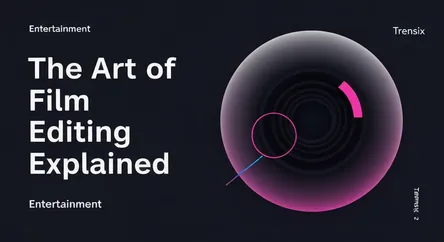Entertainment
The Art of Film Editing Explained

Discover the invisible art of film editing. Learn how editors shape a movie's pacing, emotion, and story from raw footage into cinematic magic.
What is it?
Film editing is the creative and technical process in post-production where an editor selects and combines shots into sequences to create a finished motion picture. It's often called the "invisible art" because, when done well, the audience is fully immersed in the story, unaware of the cuts. Editors work with raw footage, sound, and music to assemble the film, shaping its rhythm, pacing, and overall emotional tone. This crucial phase transforms a collection of individual shots into a cohesive and compelling narrative, ensuring the director's vision is effectively communicated.
Why is it trending?
The craft of editing is gaining mainstream attention thanks to social media and accessible technology. The rise of short-form video on platforms like TikTok and Instagram has turned millions into amateur editors, creating a greater appreciation for the skill involved. Furthermore, popular video essays on YouTube that deconstruct cinematic techniques have shed light on how editing shapes our favorite films. High-profile awards like the Oscars for Best Film Editing also keep the craft in the public conversation, celebrating its essential role in a movie's success.
How does it affect people?
Editing directly manipulates an audience's perception and emotional response. A quick succession of cuts can build suspense and excitement during an action sequence, while long takes can create intimacy or unease. By controlling the flow of information and the rhythm of the story, an editor guides the viewer's journey, dictating what they see and when they see it. This powerful tool can evoke laughter, tears, or terror, proving that how a story is told is just as important as the story itself. It is the final rewrite of the film, defining the entire viewing experience.